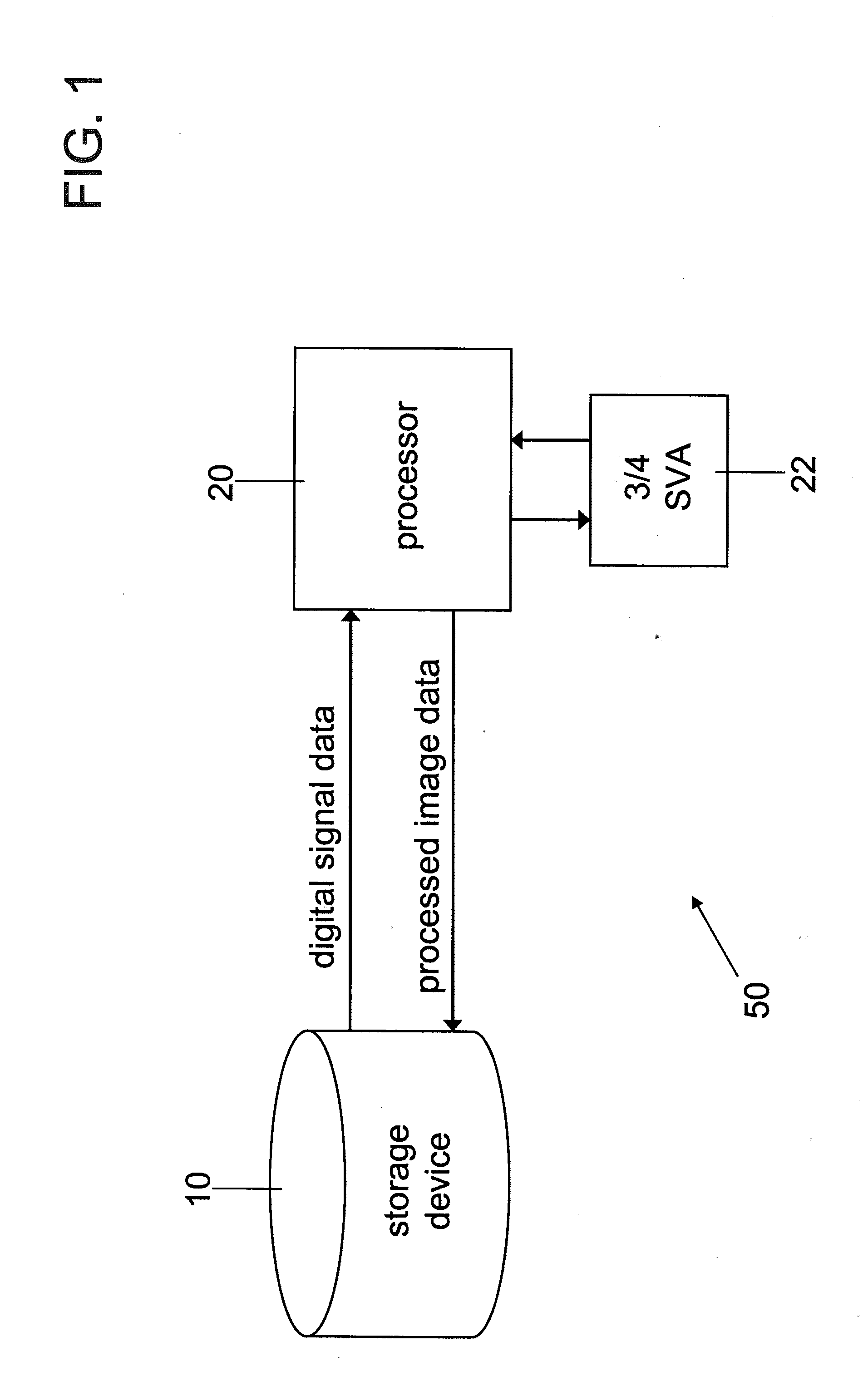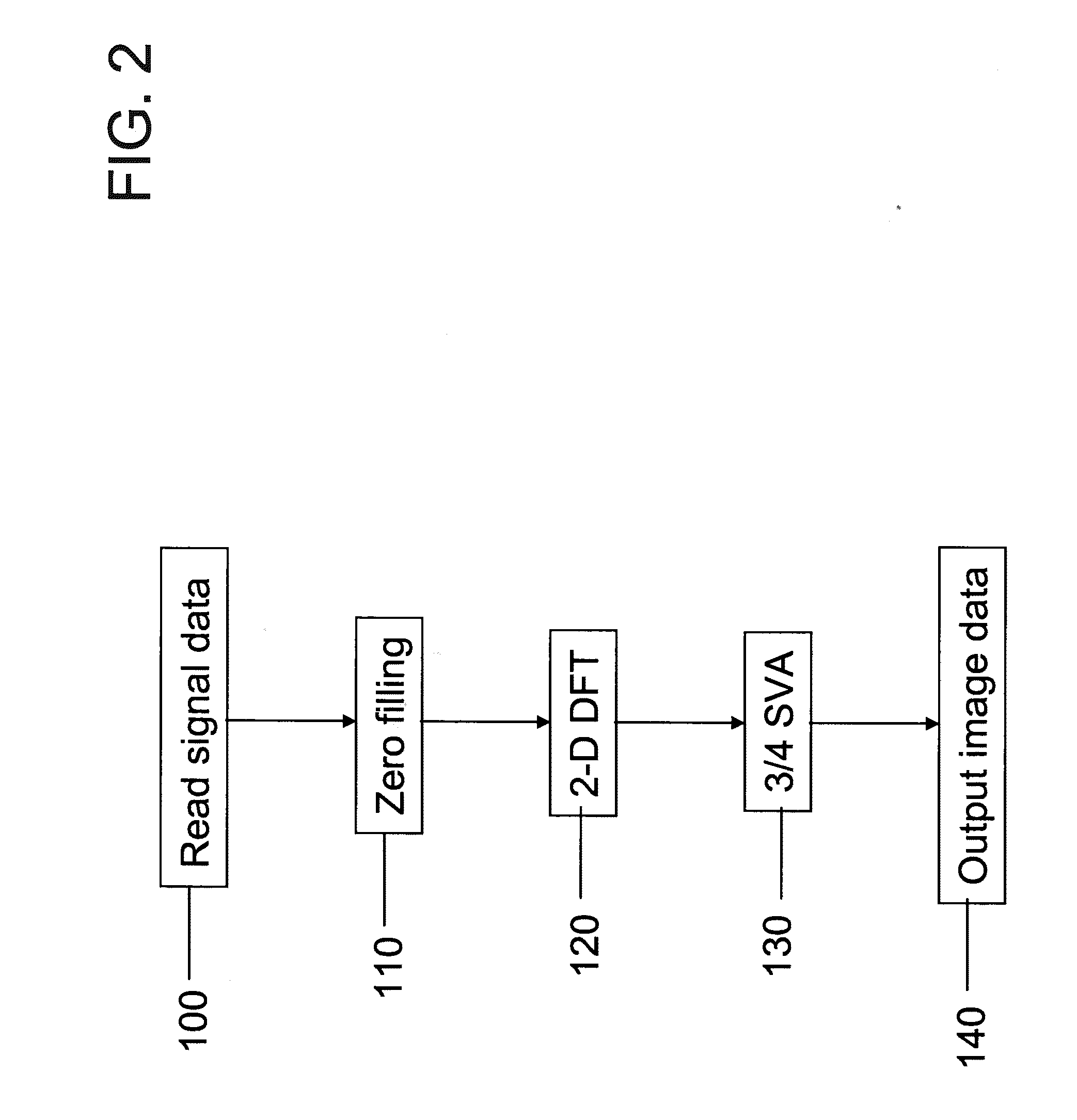Three quarter spatially variant apodization
a spatial variant and image processing technology, applied in the field of image processing, can solve the problems of requiring a significant amount of post-processing data, preventing technology from being fully exploited, and consuming a lot of resources, so as to achieve less waste of throughput and memory, and less zero filling
- Summary
- Abstract
- Description
- Claims
- Application Information
AI Technical Summary
Benefits of technology
Problems solved by technology
Method used
Image
Examples
Embodiment Construction
[0038]Exemplary embodiments of the present invention will now be described in more detail with reference to the accompanying drawings.
[0039]FIG. 1 is an image processing system according to an exemplary embodiment of the present invention.
[0040]Referring now to FIG. 1, an image processing system 50 using 3 / 4 SVA is shown. The image processing system 50 includes a storage device 10 adapted to stored sensed signal data and processed image data, a processor 20, and a 3 / 4 SVA component 22 adapted to run on the processor 20 and do 3 / 4 SVA processing to the image data.
[0041]In more detail, sensed digital signal data—for example, from a synthetic aperture radar (SAR)—is stored on storage device 10. Assume, for simplicity, that the digital signal data represents image signal data in the spatial frequency domain (the technique should work with any rectangular coherent aperture in the spatial frequency domain). The digital signal data is stored in a two-dimensional matrix, each two-variable e...
PUM
 Login to View More
Login to View More Abstract
Description
Claims
Application Information
 Login to View More
Login to View More - R&D
- Intellectual Property
- Life Sciences
- Materials
- Tech Scout
- Unparalleled Data Quality
- Higher Quality Content
- 60% Fewer Hallucinations
Browse by: Latest US Patents, China's latest patents, Technical Efficacy Thesaurus, Application Domain, Technology Topic, Popular Technical Reports.
© 2025 PatSnap. All rights reserved.Legal|Privacy policy|Modern Slavery Act Transparency Statement|Sitemap|About US| Contact US: help@patsnap.com



